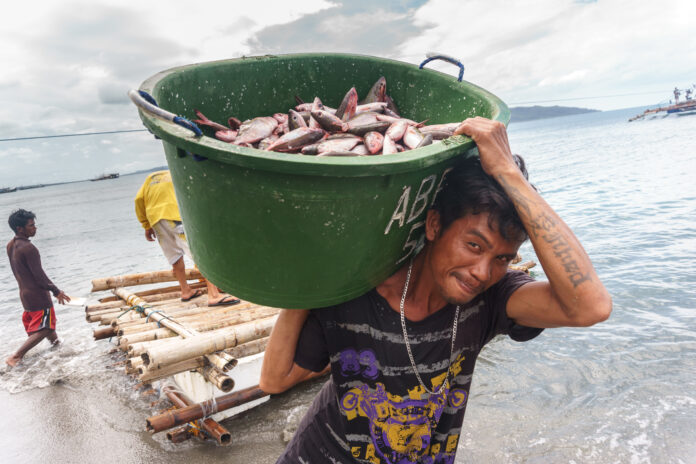The Bureau of Fisheries and Aquatic Resources (BFAR) target achieving 100-percent food-fish sufficiency in 2028.
Food-fish sufficiency level across the Philippines, net of trade, stood at 92.5 percent as at end-2022.
The BFAR said the target date forms part of a comprehensive roadmap detailing development goals, improvement, management and conservation of the country’s fishery and aquatic resources in the next five years.
Demosthenes Escoto, BFAR national director, said for food-fish sufficiency to happen by 2028, productivity in the fisheries sector has to rise and post-harvest losses reduced.
The distribution of additional interventions such as fiberglass reinforced plastic boats, fishing gear and paraphernalia, reassessment and maintenance of existing mariculture parks and supplemental guidelines for the operation and management of legislated hatcheries are some of the recommended measures
Also included were the provision and modernization of fisheries post-harvest and cold chain technologies and facilities, establishment of common shared service facilities for fish and fishery product, crafting of commodity-specific marketing plans, expanding participation in market linkages and businesses, establishment and facilitation of direct links between fisherfolk borrowers and financing institutions and maximizing the use of government assets on logistics as well as partnership with private sector in aid of marketing activities.
This would strengthen coordination and collaboration with the National Fisheries Research and Development Institute for updated and appropriate fishing technologies and provide assistance in the formation of the fisherfolk into associations or cooperatives.
“Food fish sufficiency is more than just sustenance on our tables; it embodies a nation’s inherent resilience in the face of challenges and serves as a bedrock for prosperity and the overall well-being of our people,” Escoto said.
The BFAR plan also envisions empowered, competitive and resilient fisherfolk to achieve a 5-percent poverty reduction in five years in the fisheries sector, or bring down the poverty incidence to 26 percent by 2028.
Data show a 30.6 percent and 26.2 percent poverty incidence in the fisheries sector in 2021 and 2018, respectively.
In the fourth quarter last year, the fisheries sub sector reported a 5.2 percent decline in production as several fish species posted output contractions.
Among those reporting lower production levels include tunsoy, bisugo, alimasag, tiger prawn, sapsap, lapu lapu, tilapia, squid, skipjack, milkfish, matangbaka, tulingan and talakitok, among others.







